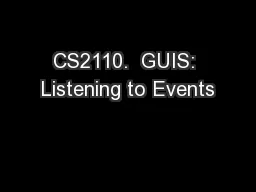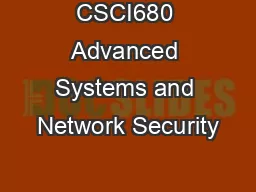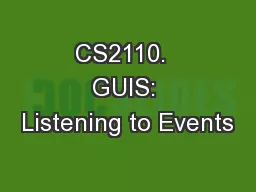PPT-CS2110. GUIS: Listening to Events
Author : cheryl-pisano | Published Date : 2018-11-09
1 Lunch with instructors Visit Piazza pinned post Prelim 1 regrade deadline Friday 23 March midnight 21 March last day to drop or change grade to SU Consider taking
Presentation Embed Code
Download Presentation
Download Presentation The PPT/PDF document "CS2110. GUIS: Listening to Events" is the property of its rightful owner. Permission is granted to download and print the materials on this website for personal, non-commercial use only, and to display it on your personal computer provided you do not modify the materials and that you retain all copyright notices contained in the materials. By downloading content from our website, you accept the terms of this agreement.
CS2110. GUIS: Listening to Events: Transcript
Download Rules Of Document
"CS2110. GUIS: Listening to Events"The content belongs to its owner. You may download and print it for personal use, without modification, and keep all copyright notices. By downloading, you agree to these terms.
Related Documents














